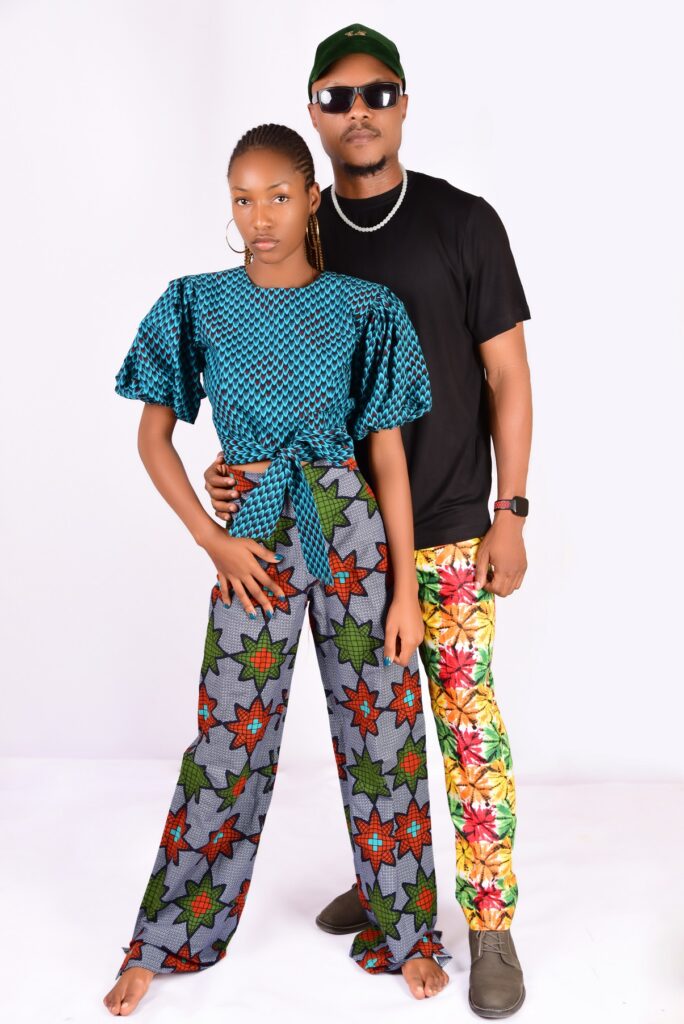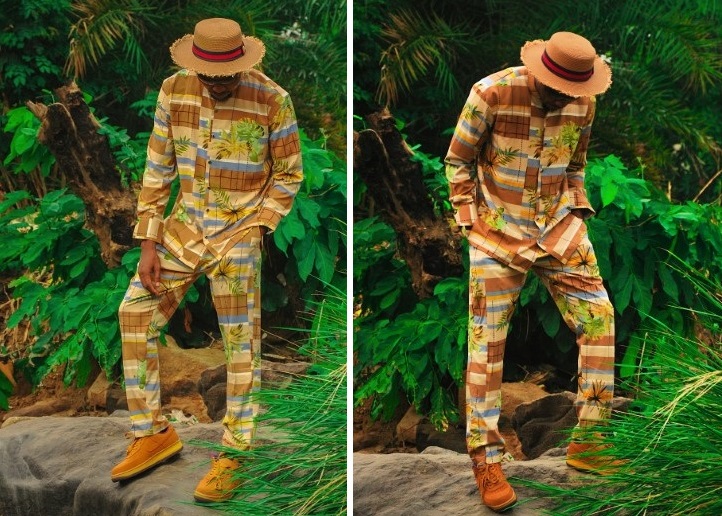“The Intricate Dance Between Fashion and Health: Prioritizing Well-being in Your Wardrobe Choices”
In the ever-evolving world of fashion, the choices we make in clothing extend far beyond aesthetics. The relationship between fashion and health is a fascinating interplay that often goes unnoticed. Fashion has played an important role in our health, particularly within females, throughout history (e.g., remember the story of how during the Victorian era the corsets the women wore affected their spine and lung capacity), and it remains so today. It has always been seen that women’s back problems come from the clothes and accessories they wear. Many items in their wardrobe are not as harmless as they may seem. The connection comes as fashion choices can impact human well-being, both negatively and positively. Hence, there is a need for fashion health awareness.
Expressing ourselves through clothing is vital, but understanding how our choices impact our physical well-being is crucial. This exploration delves into “fashion health,” revealing how clothes affect our bodies and emphasizing the importance of prioritizing comfort over trends.
What is fashion health?
Fashion health encompasses the intricate connection between the clothes we wear and our overall well-being. It goes beyond the surface level of style and delves into the physiological effects of our wardrobe choices. Understanding the implications of what we wear can empower us to make informed decisions that not only enhance our appearance but also contribute to a healthier lifestyle.
How Fashion Affects Your Health
Fashion has a lot to do with empowering women and making them feel good about themselves.
In an article published in the Journal of Experimental Social Psychology, the authors write that there is a symbolic meaning to clothes, both from a personal perspective and from the perspective of other people. For example, if a man wears a suit, will he feel more confident about his career? And will people instantly take a more professional stand because he’s in a suit? If you are dressed in a little black dress, you’ll feel sexy and elegant. Will you be approached as such?
Clothing is more than a mere covering for our bodies; it can be a source of empowerment or, if chosen poorly, a potential threat to our health. The impact of clothing on health is multifaceted, encompassing various aspects from nerve conditions to skin irritation. Let’s delve into the intricacies of how our clothes affect our health.
The Good: Weaving Health into Your Wardrobe
In its most basic form, clothing can have several direct effects on your health. Certain clothing items can offer protection against environmental factors. Long-sleeved shirts and pants, for instance, can protect against sunburn and insect bites. Some clothes are even designed with an ultraviolet protection factor (UPF) to shield against harmful UV rays.
Here are some ways:
- Protection: Clothes primarily protect our bodies from environmental hazards like UV rays, cold temperatures, insect bites, allergens, and infections. Good-quality and appropriate clothing can protect your skin from harmful external factors, thereby promoting overall health
- Temperature regulation: Clothes help maintain our body temperature, preventing hypothermia in cold weather and heatstroke in hot conditions. Layering clothing can help you regulate your body temperature and adapt to varying environmental conditions.
- Prevent skin conditions: Tight clothing or clothing made from synthetic or non-breathable materials can cause skin irritation, allergies, or conditions such as acne, dermatitis, or yeast infections due to excessive sweat and lack of ventilation.
And
- Comfort and mental well-being: Clothes can significantly influence our mood, self-esteem, and anxiety levels. Wearing comfortable clothing can make you feel good and improve your mental well-being, while wearing uncomfortable or ill-fitting clothes can lead to stress and anxiety.
- Influence on exercise: Wearing the right clothes for physical activities encourages better performance and reduces the risk of injury. Athletic wear is designed to handle sweat, reduce chafing, and allow for flexible movements.
- Posture and musculoskeletal health: Certain clothing items, such as high heels or heavy bags, can affect your posture and lead to musculoskeletal problems over time. Ill-fitting shoes can cause foot problems like blisters, bunions, or even long-term pain in the feet, knees, hips, and back.
- Sleep quality: What you wear to bed can affect your sleep quality. Loose, breathable, and comfortable nightwear can promote better sleep.
- Workplace safety: In some professions, clothing can be vital for safety. Fire-resistant materials, high-visibility clothing, and protective gear (like helmets, gloves, and steel-toe boots) can prevent injuries in jobs that involve physical labor or hazardous environments.

The Bad: Health Risks
1. Nerve Conditions
One of the primary concerns associated with tight clothing is its potential to trigger nerve-related conditions. Prolonged pressure and constriction on specific areas of the body can lead to discomfort and, in severe cases, nerve damage. Dr. Sarah Thompson, a neurologist, emphasizes the importance of prioritizing comfort and avoiding excessive compression, especially in areas sensitive to nerve compression.
2. Skin Irritation
Tight clothes can be a breeding ground for skin irritation, causing rashes, redness, and discomfort. The choice of fabric plays a crucial role in determining how our skin reacts to our clothing. Opting for breathable fabrics that allow the skin to breathe and move freely can significantly reduce the risk of skin-related issues.
What are some clothing items that can cause skin irritation, allergies, or conditions such as acne, dermatitis, or yeast infections?
Certain clothing items, including synthetic fabrics like polyester and nylon, may lead to skin irritation, allergies, and various skin conditions. Culprits include:
- Synthetic Fabrics: Materials like polyester and nylon can trap moisture, fostering fungal irritations on the skin.
- Textile Dermatitis: Fabrics with allergens like chrome, cobalt, latex, and rubber accelerators can cause contact dermatitis.
- Wool and Synthetic Fabrics for Atopic Dermatitis: Wool and synthetic fabrics may induce itching and skin irritation, making them less suitable for individuals with atopic dermatitis.
- Moisture-Trapping Materials: Fabrics like silk, which trap moisture, can contribute to the development of fungal irritations on the skin.
3. Yeast Infections
Tight clothing fosters a warm, moist environment ideal for yeast, increasing the risk of persistent infections. Choose loose garments to promote airflow and prevent such issues for overall intimate health.
4. Spine and Muscle Issues
Constant pressure from tight clothes can strain the spine and muscles, potentially leading to discomfort, poor posture, and long-term musculoskeletal issues. Dr. Emma Reynolds, a physiotherapist, advises prioritizing clothing that allows for natural movement and proper alignment to mitigate the risk of spine and muscle-related problems.
5. Circulation Problems
Tight trousers, in particular, can impede the blood’s ability to flow in and out of the legs, potentially causing circulation issues and discomfort. Dr. James Mitchell, a vascular specialist, recommends opting for looser pants and incorporating breaks where you can stretch and move around to maintain healthy blood circulation.
6. Stomach Troubles
Tight-fitting waistbands can put excessive pressure on the abdomen, leading to digestive discomfort and bloating. Dr. Rachel Carter, a gastroenterologist, suggests considering clothing options with more forgiving waistlines to support a healthy digestive system.


Is it to die for? The Case of Tight Pants Syndrome
Compartment syndrome typically arises from increased pressure within confined spaces, leading to its diagnosis.
Many individuals unknowingly suffer from “Tight Pants Syndrome,” experiencing symptoms such as abdominal discomfort, heartburn, belching, and interference with digestion. Bladder and vaginal infections, as well as blood clots, have also been attributed to the restrictive nature of tight clothing. This highlights the importance of avoiding excessive compression on our bodies and being mindful of the potential health risks associated with our fashion choices.
The Ugly: Balancing Style and Health
Recognizing health risks in clothing choices is crucial, but not all fashion decisions are harmful. The key is balancing style and health, emphasizing clothing that enhances our natural shape rather than distorting our proportions. Therefore, there is a need for fashion health awareness
Dr. Nicholas Morrissey, a vascular surgeon, emphasizes that clothing isn’t designed to give us a shape we don’t naturally have. Instead, it should complement our individuality and promote our overall well-being. As we navigate the fashion world, let’s explore how to make choices that prioritize both style and comfort, ensuring that our clothing not only reflects our personality but also contributes to our health and happiness.
A Call to Action
There is a need for fashion health awareness, and as awareness grows about the potential health implications of certain fashion choices, individuals must prioritize their well-being when curating their wardrobes. The hashtag #FashionHealth has gained momentum as a movement advocating for conscious clothing decisions prioritizing health and style.
Fashion health awareness has become a rallying cry for individuals to educate themselves about the physiological effects of their clothing choices and make informed decisions that contribute to their overall health. This movement encourages a shift in mindset, urging people to view clothing not just as a means of expression but also as a tool for promoting a healthy and comfortable lifestyle.#HealthAwareness
#ComfortAndStyle serves as a reminder that these two aspects are not mutually exclusive. Fashion should be an enjoyable and empowering experience, and comfort is a fundamental component of that enjoyment. By prioritizing both comfort and style, individuals can create a wardrobe that not only looks good but also feels good, contributing to their overall well-being.
Conclusion
The relationship between fashion and health is a complex and multifaceted one. As we navigate the world of style, it’s crucial to be aware of the potential health risks associated with certain clothing choices. From nerve conditions to skin irritation, the impact of our wardrobe decisions extends beyond the superficial.
The case of “Tight Pants Syndrome” serves as a stark reminder that fashion choices can have serious consequences for our health. However, it’s essential to strike a balance, recognizing that not all fashion decisions are detrimental. Dr. Nicholas Morrissey’s emphasis on clothing accentuating our natural shape encourages individuals to approach fashion with a mindset of self-acceptance and well-being.
As the #FashionHealth movement gains momentum, individuals are encouraged to prioritize style and comfort. #HealthAwareness There is a need for fashion health awareness, and this prompts a deeper understanding of the physiological effects of clothing, empowering people to make informed decisions about what they wear. Ultimately, #ComfortAndStyle serves as a guiding principle, reminding us that a truly empowering and enjoyable fashion experience prioritizes both our style and our physical well-being.








